There are three state forests in Delaware, totaling more than 20,000 acres. These forests are Taber Forest near Harrington, Blackbird Forest near Smyrna, and Redden Forest near Georgetown. These forests are protected and managed for numerous objectives, including wildlife habitat enhancement, timber production, recreational opportunities, and forest management demonstration. All three forests are open to the public for various activities, like in-season hunting, hiking, and horseback riding. But what is the largest forest in Delaware?
The Largest Forest In Delaware: Redden State Forest
Redden State Forest takes the crown for the largest forest in Delaware because it spans over 12,900 acres. This forest is located in central Sussex County, not far from Georgetown. The primary tree species in Redden is Loblolly pine, but there are many others, including maples, oaks, mixed hardwoods, and gum. Redden State Forest offers over 44 miles of trails, cycling, hiking, bird watching, and horseback riding. Furthermore, this forest’s large timbered tracts make it perfect for deer hunting.
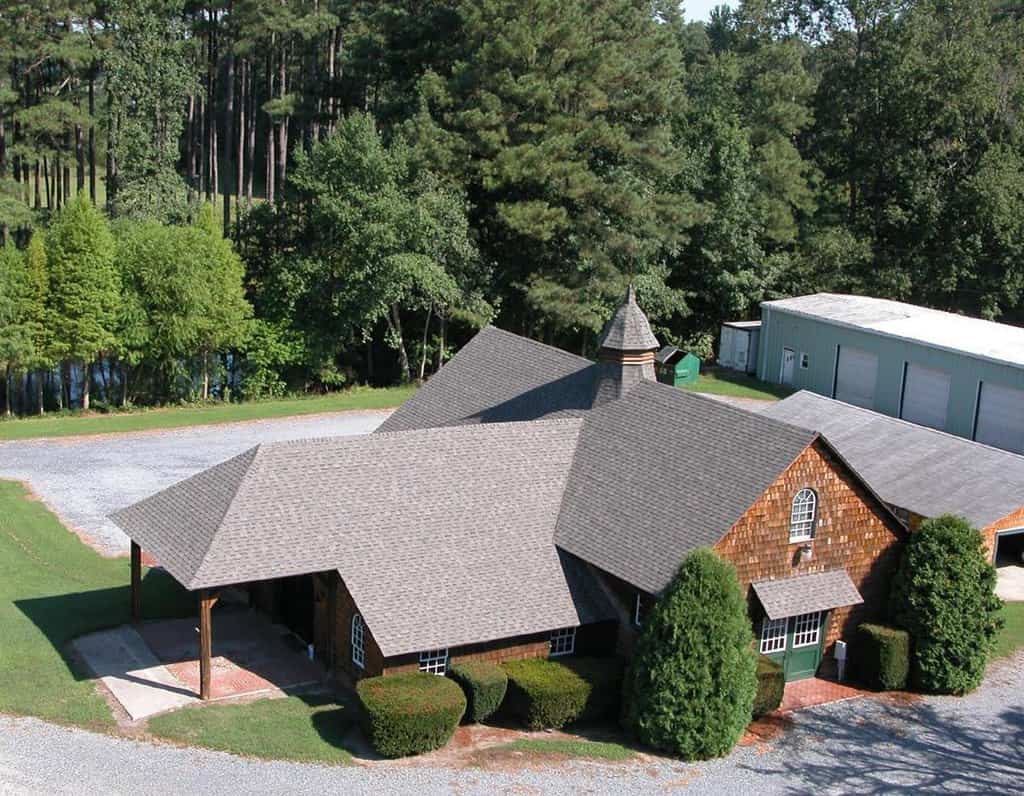
The Redden Center of Redden State Forest has information on over 44 miles of trails.
©Courtesy Delaware Forest Service, CC BY-SA 3.0 <https://creativecommons.org/licenses/by-sa/3.0 – Original / License
History Of Redden State Forest
The Redden State Forest is very valuable, which is why it’s highly protected, not only because of the fauna and flora but because of its extensive history. As a result, this forest is listed on the National Register of Historic Places in the USA. It all started with the railroad, and it’s the first thing you see when you enter the park. In fact, you will drive over these historic tracks when entering the park. This railroad was named The Junction & Breakwater Railroad, and it was one of Delaware’s earliest rail systems, completed in 1868.
Furthermore, the station was built two years after the railroad, and it was named Carey’s Station but later renamed after Col. William O. Redden. However, today, it is Redden State Forest’s Lodge. Between 1903 to 1919, it was used by the Pennsylvania Railroad Company for employee housing, but since then, it has changed hands several times, survived a fire, and was finally taken over by the Delaware Forest Service. Additionally, two other historical buildings are on site, a carriage house, and a clubhouse, which were recently restored and used for educational purposes.
Hiking And Camping In Redden State Forest
Redden State Forest is great for exploring, enjoying nature, and relaxing with family or friends. It offers several recreational activities, including:
Hiking
The most popular trail in Redden State Forest is a four-mile loop around the 1,836-acre Headquarters Tract. Hikers are welcomed by loblolly pine and hardwood trees, but as the trail veers off, it cuts through thick woods, swamps, meadows, and across bridges. But, if you want something less intimidating, there are several smaller trails off the main trail.
Camping
Redden State Forest only allows tent camping. Therefore, motor homes, campers, and travel trailers are prohibited due to parking limitations and access. There is so much to see and do while camping at this state park. It also provides guests with picnic tables, BBQ grills, firewood (when available), and fire rings.
Hunting and Fishing
The largest forest in Delaware provides a wide range of opportunities for in-season turkey, deer, and small game hunting. However, rules and regulations need to be followed, which are published in the 2018/19 Delaware Hunting & Trapping Guide.
When fishing in Redden State Forest, you can only catch and release. Furthermore, you need a state fishing license to fish on its lands.
Wildlife In Redden State Forest
There is an abundance of wildlife in the largest forest in Delaware, including:
White-tailed Deer
These deer occur in Delaware and most of North America. They are large mammals that eat various plants and are classified as browsers. But, one can often see them grazing, and browsing mainly occurs during the colder months when forage is scarce.
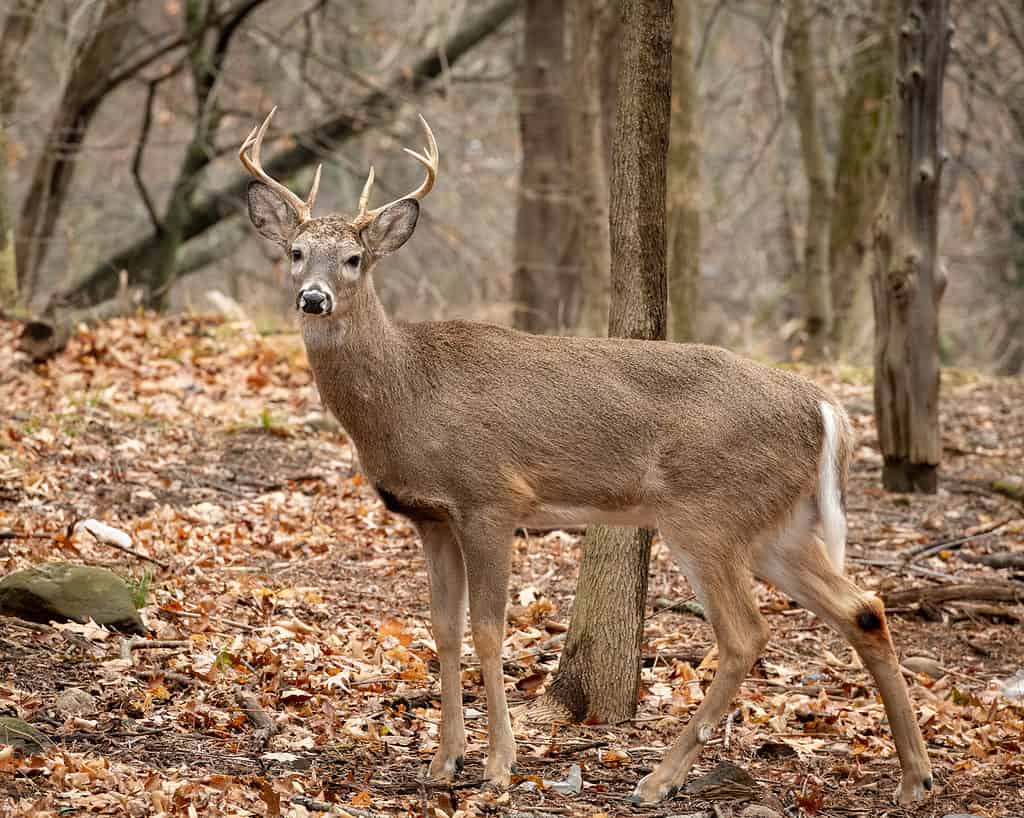
White-tailed are large mammals that eat various plants and are classified as browsers.
©Herbie Pabst/Shutterstock.com
Turkey
The wild turkey’s scientific name is Meleagris gallopavo, and it is a plump bird with a round, wide tail, long slim neck, small head, and long legs. Additionally, they have dark coloration, as their body feathers are black with a copper sheen. Wild turkeys are active all throughout the year in Delaware.
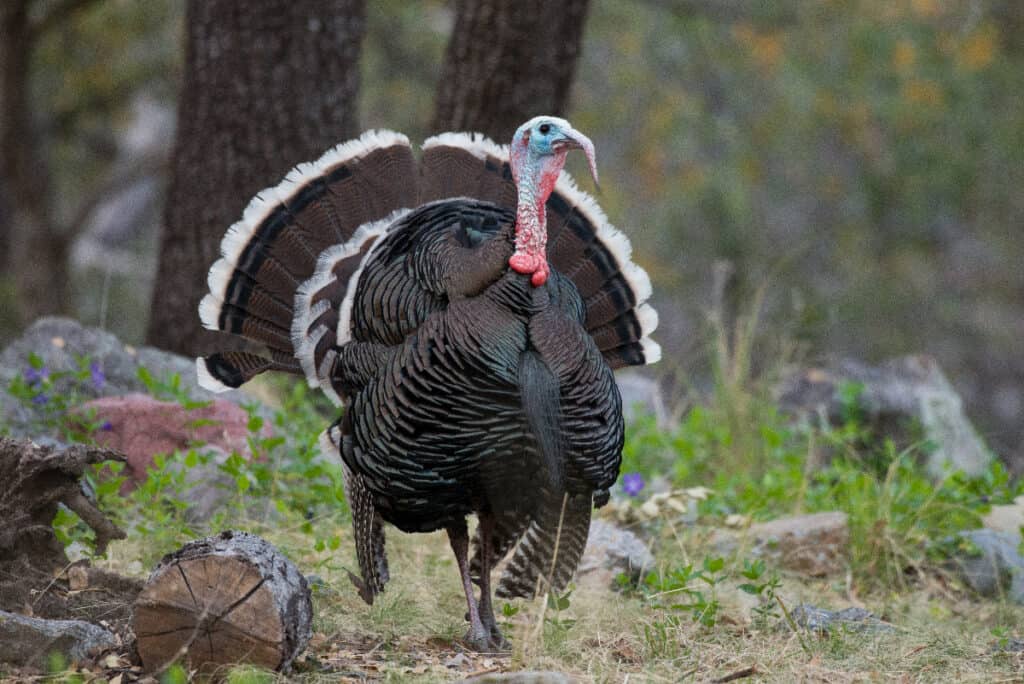
Wild turkeys are active all throughout the year in Delaware.
©Sean R. Stubben/Shutterstock.com
Ruffed Grouse
The grouse is a medium-sized bird that inhabits forests from Canada to Alaska and across the Appalachian Mountains. In fact, it is the most distributed non-migratory game bird in North America.
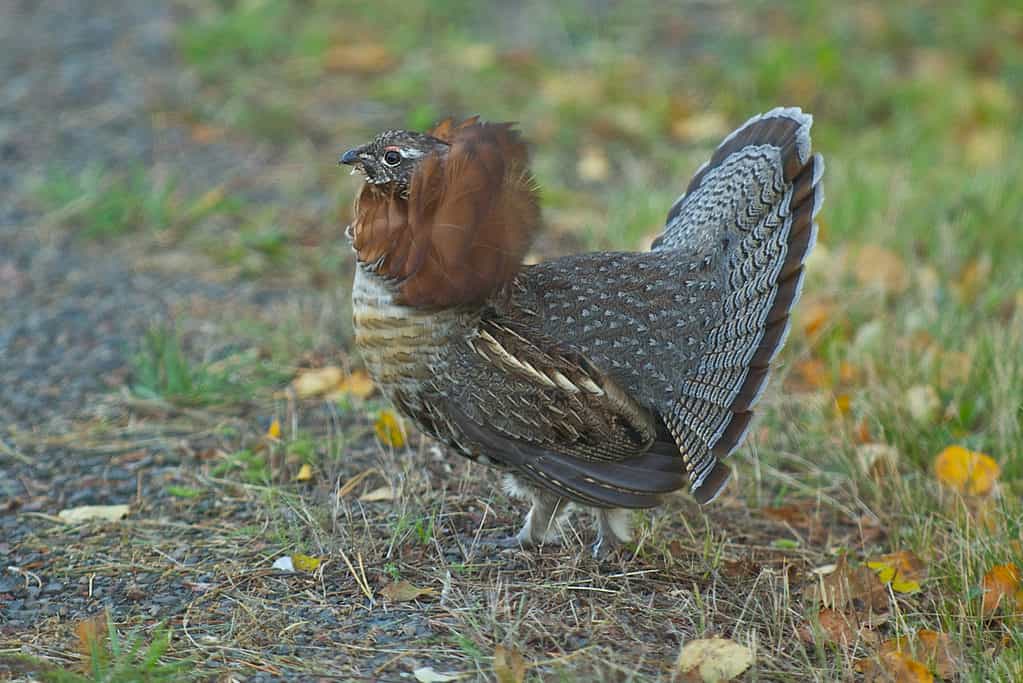
Ruffed grouse along the Gunflint Trail, Minnesota. This medium-sized game bird lives in forested areas and is often hunted in the fall.
©iStock.com/tmarko
Woodcock
The woodcock is a short-bodied, long-billed shorebird that migrates south during hunting season in Delaware and will rest in suitable locations throughout the state on its way, feeding on invertebrates and worms.
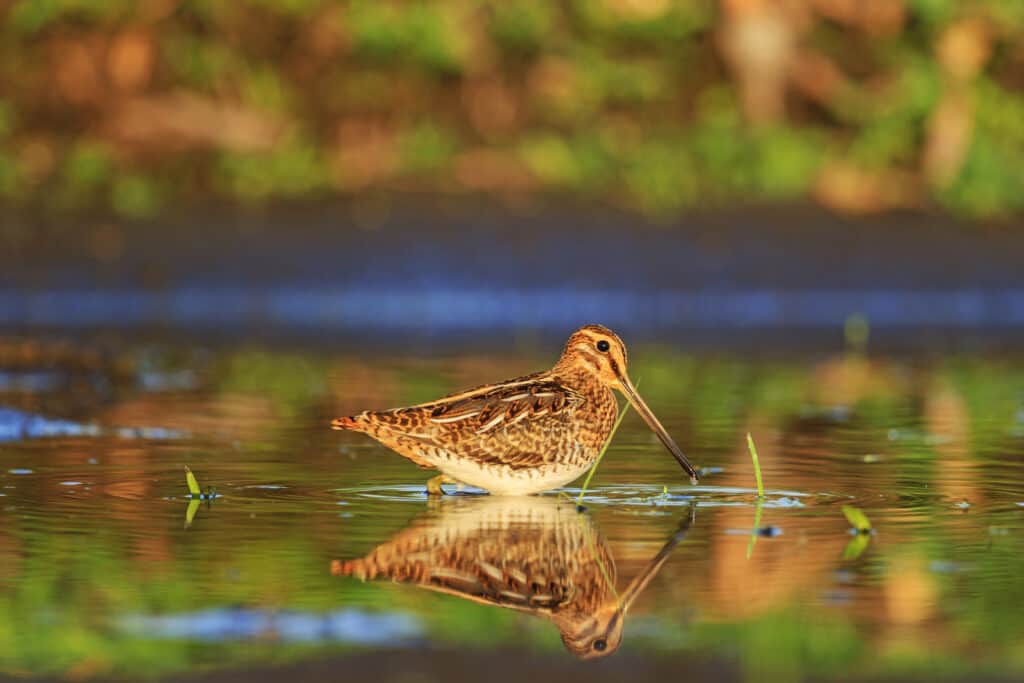
American woodcocks feed on invertebrates and worms.
©iStock.com/drakuliren
Bobcats
The bobcat has many names, including the swamp tiger, red lynx, and bay lynx. Researchers believe that the bobcat is a descendant of the Eurasian lynx who made its way to North America by crossing the Bearing Sea Land Bridge. Their diets consist of the following:
- Cottontail rabbits
- Squirrels
- Woodchucks
- Chipmunks
- Mice
- Voles
Furthermore, they also feed on birds, reptiles, carrion, and insects. However, when these predators inhabit areas around urban communities, their diet might change to small farm animals, domestic pets, and poultry.
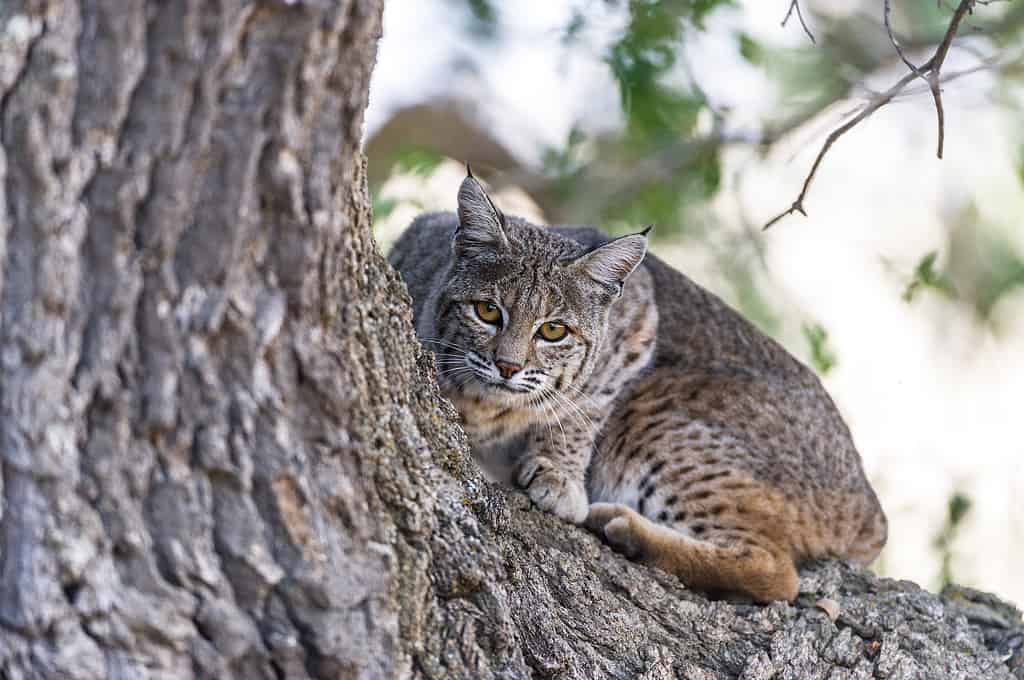
Researchers believe that the bobcat is a descendant of the Eurasian lynx who made its way to North America by crossing the Bearing Sea Land Bridge.
©iStock.com/brentawp
Coyotes
While there aren’t many coyotes in Delaware compared to competitors like the raccoon and red fox, their presence in Redden State Forest was confirmed by trail cameras, sightings from hunters and hikers, and occasionally, as roadkill. If you want to see a coyote, the best time to go looking is around sunrise and sunset.
These predators weigh between 20 to 45 pounds, and females are smaller than their male counterparts. Coyotes resemble medium-sized domestic dogs, similar in size to a collie. Additionally, they have slender muzzles, pointed ears, and bushy tails. They are brownish-gray in color with cream-colored to light gray bellies.

Coyotes resemble medium-sized domestic dogs, similar in size to a collie.
©Mircea Costina/Shutterstock.com
Muskrats
The muskrat is a semi-aquatic rodent, medium in size, with brownish fur and a pale belly. Muskrats are similar to beavers, but they are not as big. And while they have long scaly tails, it is not flat or as wide as beavers. Instead, it looks like a narrow rudder. They weigh between one to four pounds and measure 16 to 28 inches long. Furthermore, they have partially webbed feet.
These rodents breed throughout the year and have 1 to 3 litters annually. Females can have between five to six babies per litter. Their offspring learn to swim within 10 days from birth, and when they reach 21 days, they start eating plants. Their offspring leaves the lodge at a month old and become independent. Lastly, muskrats live in big family groups for survival and protection.

Muskrats have long scaly tails.
©Anton MirMar/Shutterstock.com
Beaver
The beaver lives in streams, lakes, ponds, and rivers. They prefer to inhabit woody areas so they can build their lodges on the banks of lakes and ponds. Their lodges are made of grass, sticks, and moss, built in an oven shape and plastered with mud. Beaver’s diet includes the roots and rhizomes of aquatic plants, leaves, tree bark, and grasses.
Beavers mate for life and live in colonies consisting of mating pairs. Furthermore, they don’t have many natural predators, but otters, hawks, and owls hunt juvenile beavers. However, their most significant threat is habitat loss caused by human development.

Beavers prefer to inhabit woody areas so they can build their lodges on the banks of lakes and ponds
©iStock.com/webmink
Where is Redden State Forest Located on a Map?
Nestled at 18074 Redden Forest Dr, Georgetown, DE 19947, United States, this state forest showcases a captivating blend of natural beauty and historical significance. The forest boasts a remarkable lodge that holds a rich past as a former hunting retreat for railroad executives. Imbued with the charm of yesteryears, this historical lodge stands as a testament to a bygone era.
Here is Redden State Forest on a map:
Thank you for reading! Have some feedback for us? Contact the AZ Animals editorial team.








